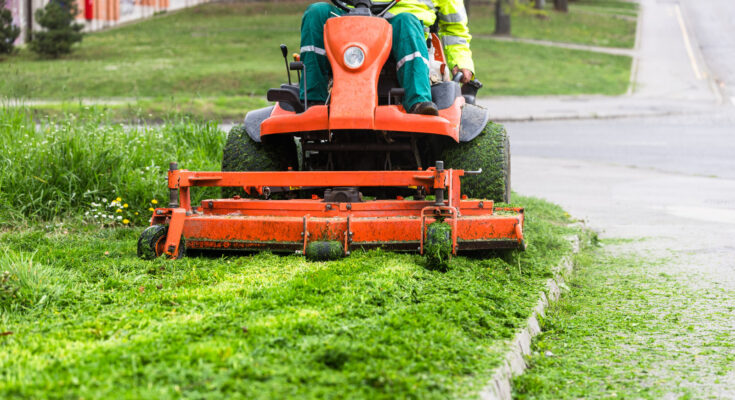The Best Way To Revitalize Your Overgrown Lawn This Spring
When most people have problems with the grass in their yard, they usually worry about needing to repair patches on a lawn that’s too thin. However, overgrown lawns can be a common problem, too. An overgrown lawn might have out-of-control growth with a height that stands 6 inches or longer. There are a few ways to get your overgrown yard under control. Cutting the yard with the mower or a string trimmer briefly alleviates the problem, but it can lead to stress for the grass and an unhealthy lawn. Rather than just mowing, you should take steps to revitalize your overgrown lawn this spring, and make it healthy again. The best way to do this is through mowing, dethatching, aerating, reseeding, and fertilizing to strengthen the lawn.
When a lawn is overgrown, you should start by using careful mowing techniques to bring it down to a manageable height. If the grass gets too long and then gets cut short, it can shock and potentially kill it. Even if it doesn’t kill the grass, cutting the yard short immediately after it grows too long weakens the roots and increases the chance of disease or insect infestation. One rule of thumb you could follow is never removing more than one-third of the length of the grass when mowing. If the overgrown grass is 6 or 7 inches long, don’t cut it shorter than 4 or 4-1/2 inches. You could then mow it again a few days later, again taking no more than one-third of the height. Slowly take it down to the desired height.
How to strengthen an overgrown lawn after mowing the grass to a healthy height
Once you have the grass at the proper height, you can begin taking steps to strengthen the plants that may have become weakened because the overgrowth absorbed more nutrients than the soil could adequately provide. A good starting point is dethatching, which involves removing extra dead plant material from the ground around the grass. If the ground feels spongy as you walk on it, you have too much thatch. You can rent a power rake to dethatch large areas or use a manual rake for smaller spaces. Remove the dead material that came up or use it in a compost pile.
The next step is aerating the lawn, which allows nutrients to reach the roots of the grass. When grass undergoes a lot of stress, aerating is important for reducing the soil compaction that often accompanies it. You can aerate the lawn with a manual spike aerator or by using an aerating machine, which pulls plugs of soil out of the ground. You may have to rent the machine, but it’s the most effective option.
Finally, you’ll want to overseed the lawn to bring in healthy young grass and eliminate bare spots. The best time of year to overseed your lawn is late summer or early fall, but you can still do it in spring when soil temperatures are at least 50 degrees Fahrenheit. Pick a time to overseed where you can water the lawn regularly so the soil feels constantly damp without becoming oversaturated. Once your grass is in good health, you can fertilize it, ideally around spring, early summer, and fall.



